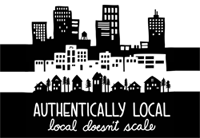It’s Tuesday! Better Stay Safe!
____________________
Disasters like earthquakes and winter storms can damage water systems. Broken water mains can happen after an earthquake or even a construction accident; freezing temperatures can also rupture pipes in homes.
Store at least 3 days of water for each member of your family.
1 gallon = 1 person = 1 day
Store 1 gallon of daily water for each family member.
- 3 day supply for a family of 2 = 6 gallons of stored water
- 3 day supply for a family of 5 = 15 gallons of stored water
If you have pets or additional needs, be sure to account for those too.
How to store water
Gallon-sized juice containers, 2-liter soda bottles, and water cooler jugs are all great water storage containers.
- Clean your container. Put a small amount of bleach (~1/8 teaspoon) and a few cups of water into the bottle. Cap it and lightly shake the container. Empty the bottle, and wash the lid and around the top of the bottle.
- Fill your container. Fill up with fresh tap water, all the way to the top of the bottle. Screw the lid on tightly, and you’re set.
- Label the container. Label the bottle “emergency drinking water” and add the date you filled the container.
- Keep your water fresh. Every 6 months, empty and refill the containers- use it to water plants or rinse off outdoor furniture. Changing your water when you change your clocks in the spring and fall is an easy way to remember this.
Things to avoid
This is mostly common sense. Still, make sure:
- Don’t use glass bottles (they can break)
- Avoid plastic milk jugs (hard to sanitize, and the plastic gets brittle)
- Don’t use bottles that held bleach or chemicals
If you’re going to buy water, it pays to invest a little extra for a sturdy container. When I stored hurricane water in Florida, I bought the rectangular 3-gallon containers with the little spouts, and stacked them under my kitchen counter.
Eight or nine months later, I came home from work one day to find a tiny flood across my apartment… the containers had gotten brittle, and a tiny crack in the corner of one was all it took to drain the whole thing. Keep an eye on your stash, and keep it in sturdy containers!
The blue plastic 5-gallon jugs are easiest, and most grocery stores have them. Add one to your cart each time you go, and you’ll have it taken care of quickly.









Stay Connected